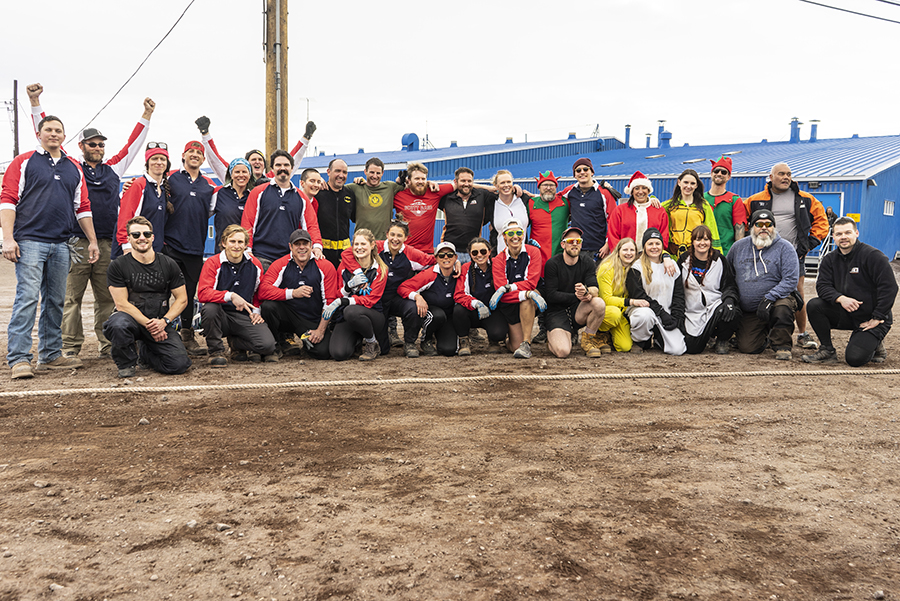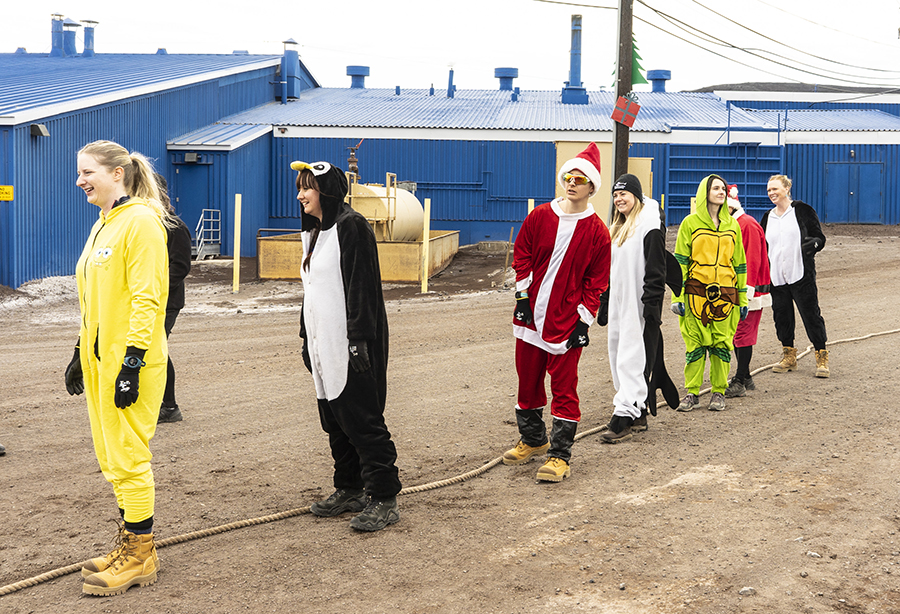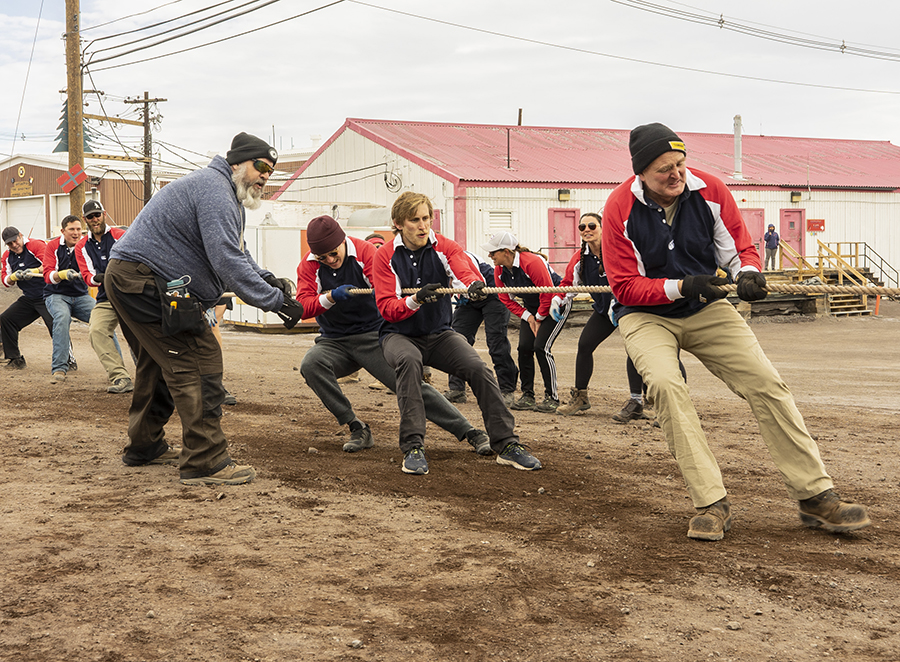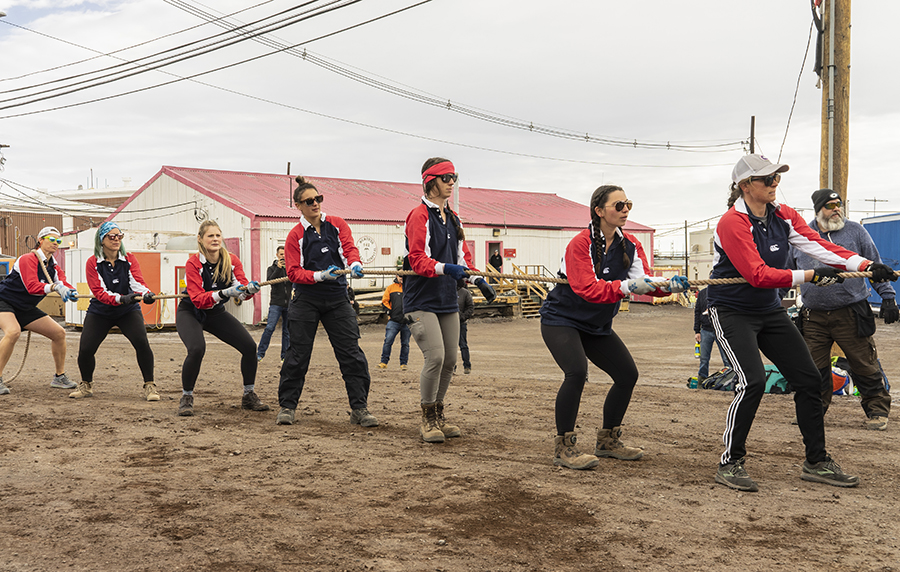
Photo by James Graham. |
The U.S. and New Zealand tug of war teams. |
Tug of War builds camaraderie between Americans and New Zealanders
A friendly competition brings Antarcticans from neighboring bases closer together
By Kevin Kiernan, Antarctic Sun Contributing Writer
Posted April 04, 2022
The game is Tug of War. The command comes: “Get Ready!” I am standing at my place at the head of the rope and bend down and pick it up, two inches of twisted hemp. We spread our legs wide and lean back into a squat, putting tension on the rope. Across from me I see the determination of the men facing off against us. They look intimidating, but I have my own game face on. The final command comes: “Pull!”

Photo Credit: James Graham
The Kiwi women's team dressed for battle.
It's December 21, 2021, and we're playing Tug of War at McMurdo Station as part of the New Zealand Governor General's Cup, an annual competition between the Americans at McMurdo Station against the New Zealanders, or Kiwis, at neighboring Scott Base. The friendly competition is sponsored by the New Zealand Governor General of Antarctica to promote fellowship between the two research stations that are just two miles apart on Ross Island. The game was first played in 1983 but did not become an annual tradition until 2014. It's been played every year since then, except for a brief hiatus during 2020-21 season.
Scott Base has a population of less than 100 people during the austral summer, compared to the 500 to 1,000 people working at McMurdo Station. The games are separated into men's and women's competitions, with six people on each tug of war team and an overall team weight limit established to balance the greater population of McMurdo.

Photo Credit: James Graham
The U.S. men's team pulling hard on the rope.
Though the Kiwis are underdogs, their men's team has won the last two competitions. The U.S. men's team has something to prove today, and days of training have been put into it by coach and competitors alike. We've been practicing for an hour twice a week for the past month. Today, we dressed down to stay within the weight limit, and though it's a nice day, it's still below freezing, and we are quite cold.
For a moment nothing moves, but the tension on the rope ratchets up, an inexorable pressure building. Both teams are grunting, scrambling in the dirt with their feet. It seems like forever, maximum effort against a rope that just doesn't move. Faces grow red as seconds turn into minutes.
Centered between the two teams a small ribbon dangles. On the ground a center point is marked and on each side, six feet away from the ribbon, lines are drawn, our goal.
Straining interminably, the little ribbons marking the rope center finally twitches away from us a couple of inches, then sways back the other way. Feet are sliding in the loose volcanic soil as people go all out, seeking any small advantage, any movement. Once the rope starts moving momentum takes over and we haul the Kiwis forward over our line.

Photo Credit: James Graham
The U.S. women's team.
It is a best of three contest, and we switch sides for the second bout. This time the Kiwis get the edge and we are dragged, protesting in every muscle fiber, over the line. A final bout ensues, the longest bout, every person on both teams already worn from the intensity of the previous conflicts, neither side willing to give, but eventually we succeed in pulling the Kiwis over. The U.S. women beat the Kiwis in a sweep. Afterwards celebrate with our gallant competitors, enjoying the company of our Antarctic companions. Fellowship attained!
Kevin Kiernan is the tool room attendant in the Vehicle Maintenance Facility at McMurdo Station and is spending his first season in Antarctica.








